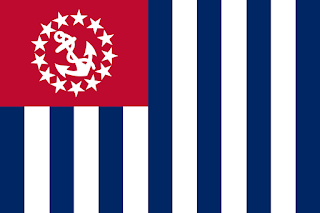Today, we received title on our new boat.
After 7 years of sailing our beloved Catalina 22', Fantasia, primarily in Lake Washington and Seattle's Puget Sound area, we ventured north to the beautiful San Juan Islands last August for the first time for a weeklong sailing adventure. "Cruising" like this is a very different experience from our day sails and evening sunset cruises. We decided pretty quickly that although we love our little Catalina 22' swing keel, we really needed a little more cabin space in which to spend days or even weeks anchored out exploring the waters of Puget sound and the greater Salish Sea. The nature of our work has changed, as it has for so many of us, in the past couple of years, and we now work primarily remotely. With this new level of freedom, we began to entertain the idea of working from on board a boat, still in the same general area, but not limited to our home offices. We began thinking about what our next boat would be, and agreed that another Catalina in the 32'-36' range would be a good fit for us and our current needs. We started keeping a watch on the boats coming up for sale in the area and eventually found one that we were both happy with, a 1994 Catalina 320, that we had actually seen last August during our San Juans trip! Originally christened 'Rader's Folly II', she's been known as 'Skål' since Admiral Ronald P. Morse purchased her in Norfolk, VA., in September of 1994. We deliberated, even agonized, over her name quite a bit and ultimately decided that the name 'Skål' wasn't a good fit for us. Her name will be changing once again, but that will be revealed another day.
We are not selling Fantasia, our Catalina 22 at the present time. We have poured so much time, effort, and money into her that we feel that selling her is just a waste. She can sit on the trailer in the driveway until we find a new home for her, perhaps with one of our young adult kids once they are ready to take her on for creating their own sailing memories.
Purchasing a Catalina 320 was an entirely different experience from purchasing our Catalina 22. With a small trailer sailor, you're likely to purchase with a walk around, a handshake, signing some paperwork and handing over some cash at a dining table. This purchase was much more like a home purchase with seller and buyer's brokers, a formal written offer, sale contingencies, a written offer acceptance, formal inspections (in boat terms, these are the survey, haul out, and sea trial), and an escrow/title company in the middle of it all. If financing your purchase, you'd also have a bank and loan documents wrapped into the process as well. As Skål was moored about a 90 minute drive from us in Anacortes, WA., we met with our buyer's broker to look at another local Catalina 320 which was already under contract, just to be able to sit on board to confirm if the size and layout 'felt' right for us. A couple of days later, we made the drive up to see Skål and spent the next few hours crawling all over her, peeking in every locker and bilge space. Overall, she was in pretty good shape for a 28 year old boat, but had plenty of opportunity for us to make her our own with some TLC and a new list of boat projects. We've joked at times that it's possible we're as addicted to sailboat projects as we are to sailing itself. But I think it's just that we get such a sense of accomplishment and pride in ownership from the maintenance and upgrade projects we take on.
So what's on the agenda for us and the new boat now?
First up we have a few critical maintenance items to take care of. We pulled the main sail off the boat and sent it off to a sail loft to have all the slugs replaced. Four of them, we knew from our initial inspection, were already broken, and the others were likely also brittle and headed towards failure. Best to just have them all done and not have to worry about them. We decided to have a 2nd reef point added to the main and to also have her Dutchman flaking system filaments replaced. This will make dropping the sail much easier to manage for us at a fraction of the cost of adding a new stack pack.
Inside, our surveyor had noticed evidence of a small freshwater deck leak from one of the stanchions. Rebedding that is a priority before it can do any damage to the deck or the interior. Next up, installing some new smoke and CO detectors, fire extinguishers, and replacing a couple of non-working interior lights. We'll also be replacing two aging engine hoses and a leaky bilge hose. The other 50+ items already on our to-do list are relatively minor things like cleaning the Magma grill, updating labels on the electrical panel, replacing wire nuts with proper electical connectors, calibrating the knotmeter (which disagreed with our GPS devices during our sea trial), fixing/replacing a cam cleat, and servicing the winches. We're super excited to be embarking on a new journey with new things to learn.















































